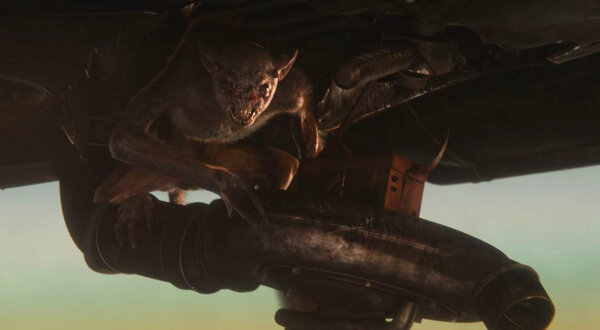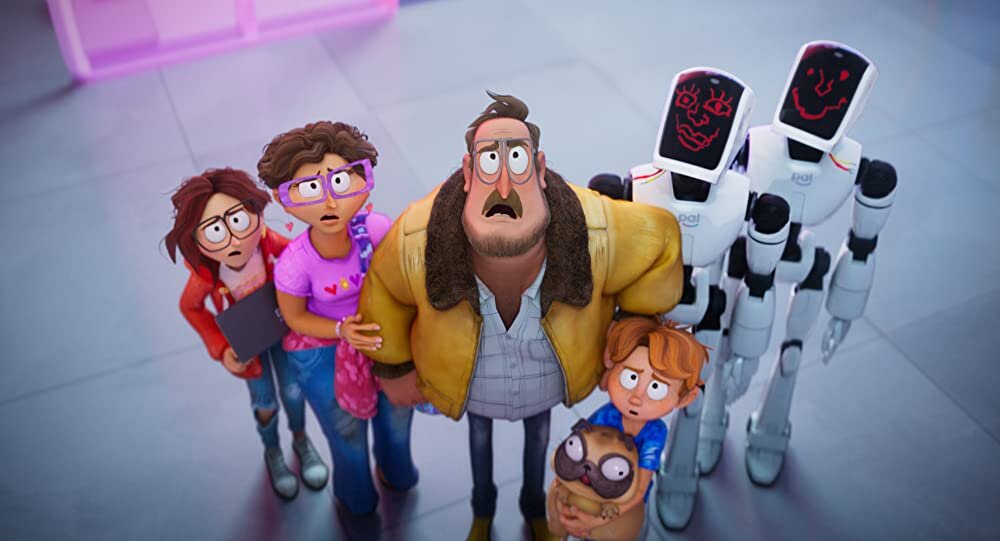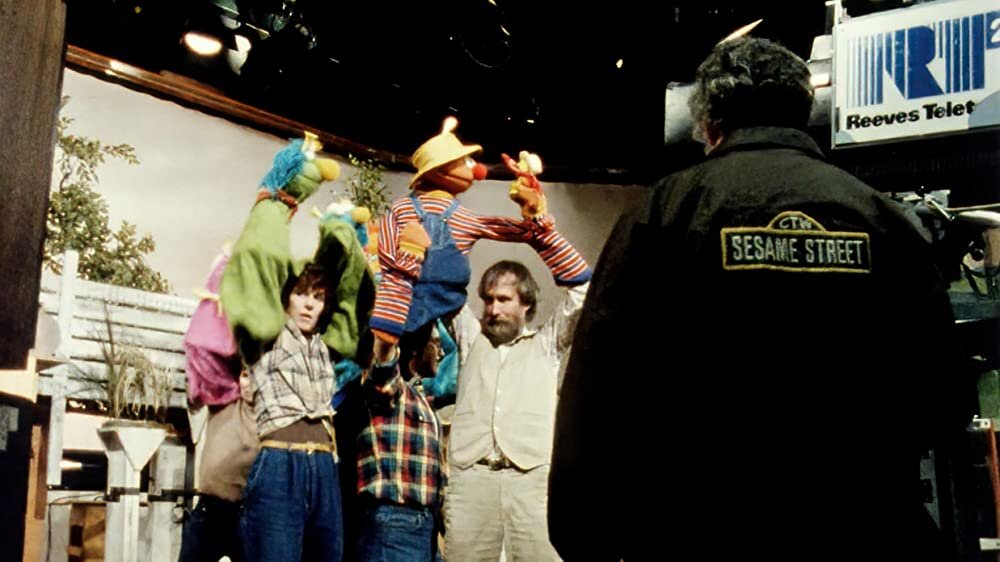SHADOW IN THE CLOUD
Directing: C+
Acting: B-
Writing: C-
Cinematography: B
Editing: B+
Special Effects: C+
There is so much to say about Shadow in the Cloud. Where do I even start?
If I were to start at the true beginning, then I would need to mention the 1963 Twilight Zone episode “Nightmare at 20,000 Feet,” from which this movie clearly gets its inspiration. In that episode, starring William Shatner, a man taking a commercial airline flight sees a “gremlin” on the wing, and no one believes him. The episode has been remade a couple of times, both in a 2019 reboot of the series, and perhaps most famously, in a segment of the 1983 film Twilight Zone: The Movie starring John Lithgow.
In this 2020 film, starring Chlöe Grace Moretz, the setting is World War II, and the cold open before the title cards features an old-school style animated instructional video cautioning pilots to stay focused and not blame their own errors on so-called “gremlins”—a real reference to a myth among aviators of the mid-20th century. This is even how they are first referenced, by character Murray Futterman, in the 1984 feature film Gremlins (which is far, far superior to this film). One could even argue that, at least in spirit, Shadow in the Cloud is the third film in the Gremlins franchise. It sort of blends the original myth with the literalization of the mischievous creatures of the films.
There’s even a serendipitous irony to the production of Shadow in the Cloud: it feels very much like a film that might have been made in quarantine, most of the run time featuring a single character onscreen, alone in a confined space. From this angle, it takes inspiration from films like Locke (2013), which featured only Tom Hardy driving a car for its entire run time. I’d estimate a good two thirds of Shadow in the Cloud features only Chlöe Grace Moretz, as Maude Garrett, in the Sperry ball turret of a B-17 bomber plane. She arrives at this plane with a crew of seven men, wielding a document proving she is on a top secret mission that means they must let her board. But, they demand that she ride in the turret.
It’s the setting, and the World War II context, where Shadow in the Cloud veers from that original Twilight Zone episode—which featured a man on a present-day commercial airline flight—but the basic premise remains exactly the same. She starts seeing a creature crawling around the outside of the plane, and, after the men spend a lot of time making openly misogynistic comments about her over the intercom, they don’t believe her when she tells them what she sees.
Before long, though, we see plenty of this creature, which, although they continually refer to it as a “rodent,” looks much more like a quasi-humanoid bat. This is going to qualify as a spoiler, but I don’t care because by this point the movie has gone into high-octane preposterousness: she has with her a “package,” which is later revealed to be concealing her baby. This package gets taken all over the place, including at one point being snatched by the creature. Whenever we see the box from outside of it, the thing is getting whipped around all over the place: flapping in someone’s hands as they run, or even dangling from beneath the wing, before Maude literally goes out of the turret to retrieve it and then crawl back into a hole on the underside of the plane, all while it is flying. At one point, even while Japanese aircraft are firing at them. And then? Every time Maude opens the box to check on the baby, it’s contented as can be.
The point is, there is no part of this film that is in any way concerned with realism. Having a “gremlin” somehow crawling around a flying fighter plane is one thing, but most filmmakers would at least compensate for that with some measure of plausibility elsewhere. Not director and co-writer Roseanne Liang (the initial drafts of the script were written by accused sexual assaulter Max Landis, which is a whole other story). It’s as if this film started with a literal cartoon just to prime us for the rest of the movie being just like one.
There’s a curious element to the tone of Shadow in the Clouds, which seems almost to be self-aware but stops just short. The storytelling is straightforward, which somehow makes it more entertaining. I won’t lie: even though this movie is objectively idiotic, I had a pretty good time watching it. Mostly because it was so shamelessly dumb. There’s a scene late in the film where Maude is essentially in a fist fight with the gremlin on the ground—and she’s kicking his ass. In no universe is it plausible that this woman could dominate this creater, but, perhaps Liang just made a conscious decision: in no universe would this gremlin actually exist either, so what does it matter?
The latter half or so of the movie is packed with this kind of stuff. The other men on the plane are dispatched, one by one, and somehow Maude narrowly escapes death herself each time. There’s even a moment where she literally falls out through an opening in the floor of the plane, and an exploding enemy plane just bounces her right back in—conveniently through the opening she just fell through. I laughed out loud. And nothing about the film suggests we’re supposed to find it funny.
The dialogue is nearly all completely contrived, which makes the “feminist” bent to the story a little hard to take. This movie is getting a fairly typical amount of hate by man-boys online who insist it’s made by “man-haters,” which is a stupid take no matter what. Still, even I would say the script lays it on a little thick, especially or a movie about a monster on an airplane. I’m usually all for feminist subtext, except in this movie it’s both unsubtle and clunky, lacking in any intellectual wherewithal.
Depending on your perspective, however, that arguably adds to its charms: the way this movie tries to be taken seriously as an action-horror filick and winds up being unintentionally campy. Not to an extreme degree, but it’s there. And it was a big part of what entertained me about it. I might have had less of a fun time if it were longer, but this movie not only clocks in at a mere 83 minutes, but the end credits begin with nearly 10 of those minutes to spare. It doesn’t even give you time to get too annoyed with it. It’s just a fun, dumb ride.
A gremlin snatches a baby in a box on the underside of an airplane, which is totally normal.










